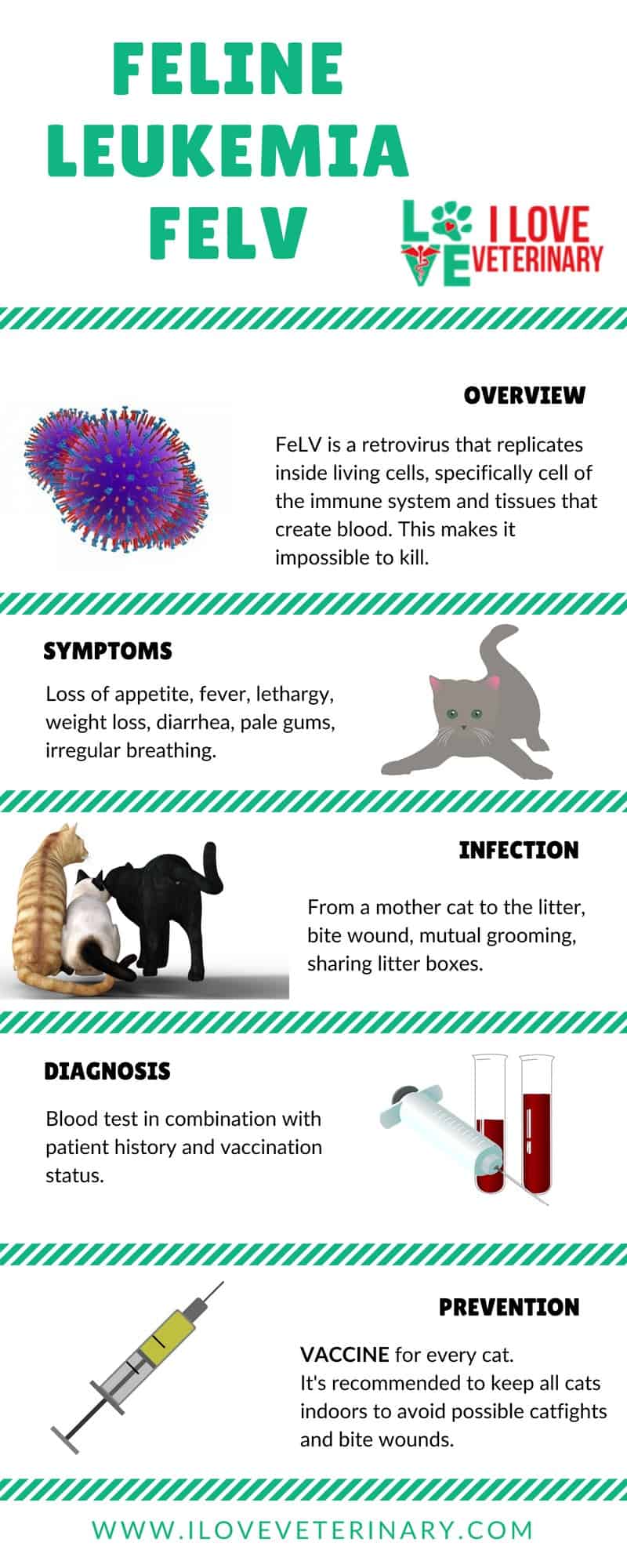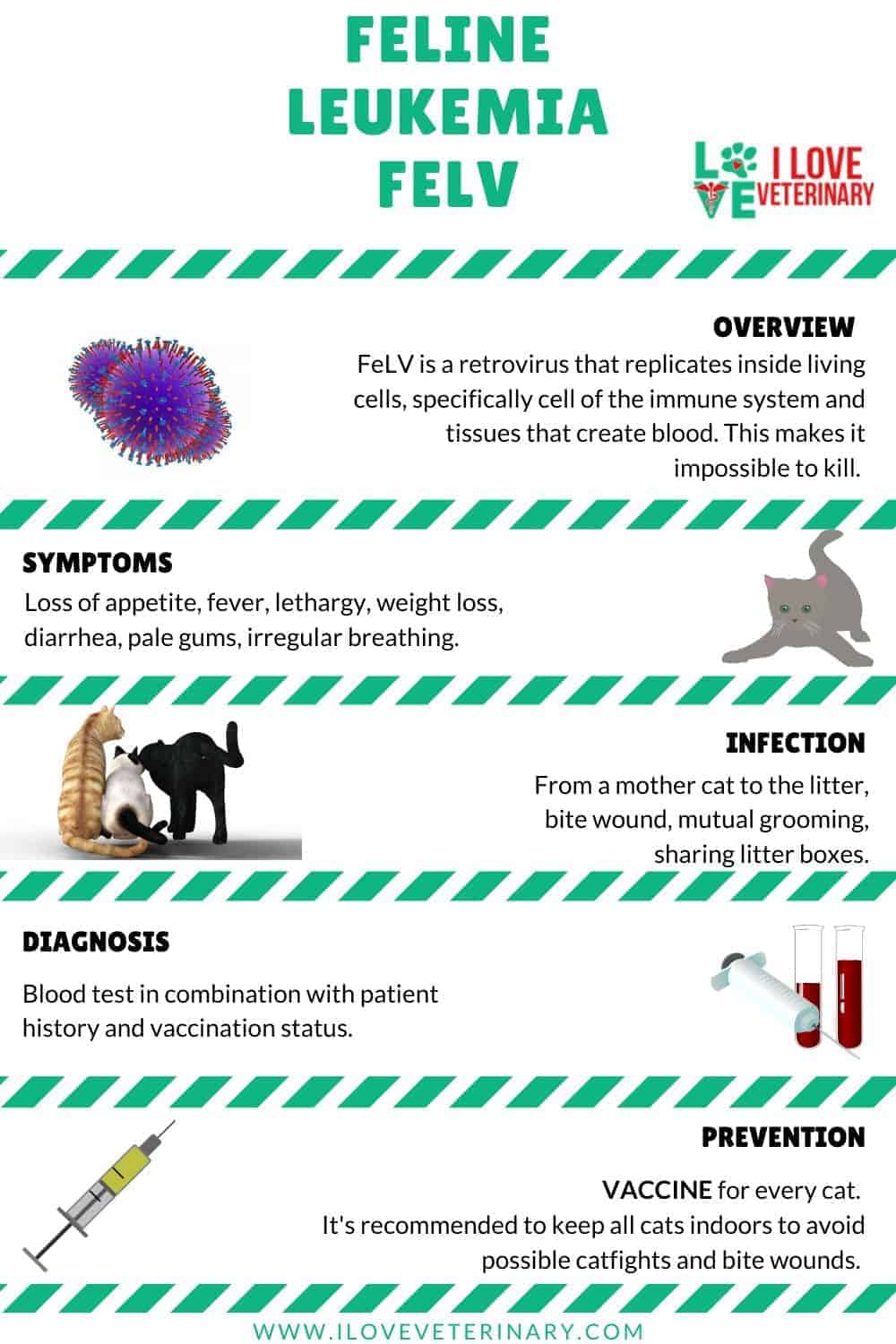What is Feline Leukemia Virus?
Feline leukemia virus (FeLV) is an infectious disease of worldwide distribution which belongs to the retrovirus family and can only affect cats.
The virus enters the cat’s body and starts to replicate before entering the bloodstream. Some cats may develop a suitable immune response to fight the infection within three months. When the retrovirus enters the bloodstream, it will attack lymphoid tissues and bone marrow, and then start to suppress the immune system, making the cat susceptible to other conditions and illnesses and with permanent feline leukaemia.
In other cases, FeLV may become a latent infection (dormant or inactive) for several years or months.
How is Feline leukaemia virus transmitted?
Saliva is the primary transmitter of the virus. FeLV is also present in mucus, faeces, milk and urine.
Transmission is through:
- Bites
- Scratching
- Fighting
- Use of the same litter box, feeding and water bowls
- An infected pregnant queen may pass the infection on to her unborn
- A lactating queen with feline leukaemia may pass the virus on to a kitten through milk
- Multi-cat environments have higher infection rates.
Below you can find an infographic that you can buy as a poster with the most basic information on Feline Leukemia.
If you suspect your cat might be infected, visit your veterinarian ASAP.
How is FeLV diagnosed?
Blood tests in veterinary clinics, patient history and vaccination status are the tools to diagnose leukaemia in cats. Cats should be re-tested 12 weeks after to verify the infection.
What are the clinical signs of feline leukaemia virus?
Cats with active FeLV can show many symptoms due to the deterioration of their immune system. Some clinical signs are:
- Lethargy
- Fever
- Poor appetite
- Weight loss
Conditions associated with the virus:
- Lymphosarcoma: tumours of the lymph system
- Anaemia: decrease of red blood cells
- Abortion
- Enlargement of the spleen
What are some tips to prevent the infection of feline leukaemia virus?
To prevent the spread of the infectious disease is essential to take some measurements.
- Testing all new cats that join a household.
- Feline Leukaemia vaccinations are available, but there are not 100 per cent efficient.
- Maintaining hygiene.
- Isolation of cats with FeLV+
If you liked this article, you can pin the image below on your Pinterest! 🙂


